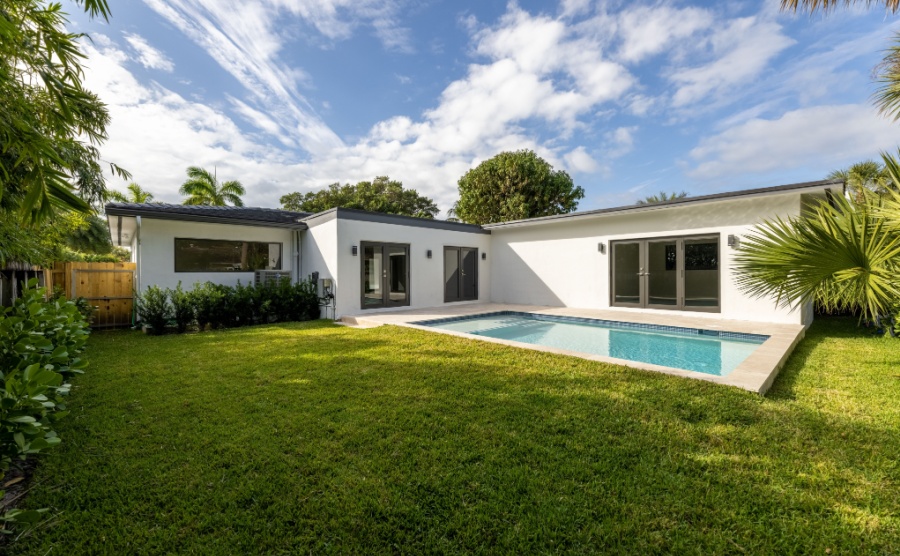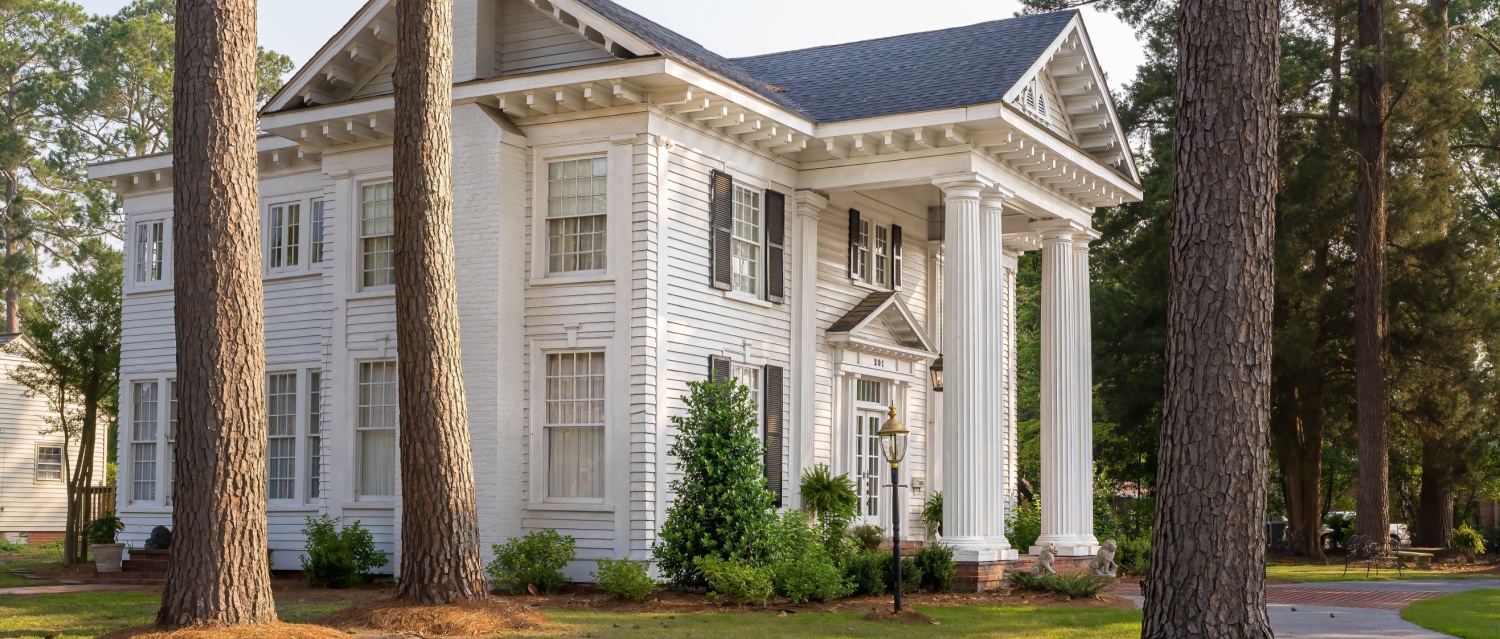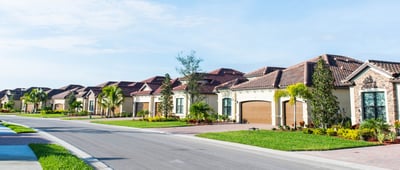When you begin your search for a new home in the US, one of the first – and perhaps most meaningful – decisions you’ll face is whether to buy a brand-new build or a historic property full of charm and character.
It’s more than just choosing between old and new. It’s about finding a home that fits your lifestyle, reflects your personal values, and supports your long-term goals. Are you drawn to modern convenience and efficiency, or does the idea of restoring a home with a story appeal to you?
Both options offer unique advantages and potential challenges, and the right choice depends entirely on what matters most to you. This guide will walk you through the key differences between new builds and historic homes, helping you weigh the pros and cons so you can move forward with confidence and clarity.
Whether you’re dreaming of energy-efficient smart tech or original hardwood floors, this comparison will help you decide which path to take on your journey to finding the perfect place to call home.
Contents
- Character vs convenience: What defines your ideal home?
- Location: centre-stage or expanding suburb?
- Cost and value: Upfront vs long-term investment
- Maintenance and lifestyle: Time vs peace of mind
- Energy efficiency and sustainability
- Aesthetic appeal vs personalisation
- Conclusion: Which is right for you?

New build homes often have modern ammenities such as pools and air conditioning
Character vs convenience: What defines your ideal home?
Historic homes are full of charm, character, and craftsmanship that’s hard to replicate. Original woodwork, stained glass, intricate moldings, and unique architectural styles (like Craftsman, Tudor, or Colonial) give these homes personality and a story. They’re typically found in well-established neighborhoods, rich with mature trees, walkable streets, and a strong sense of community.
New builds, on the other hand, prioritise convenience and modern comfort. Open floor plans, walk-in closets, smart home systems, energy-efficient appliances, and minimal maintenance are often standard. If you’re seeking a move-in-ready experience that reflects modern lifestyles, a new home may better meet your needs.
Ask yourself: Are you excited by the thought of restoring original hardwood floors or customising a new kitchen to your taste? One speaks to a love of legacy, the other to a desire for efficiency.

Suburbs of new homes are built with a lot of thought for amenities and access
Location: Centre-stage or expanding suburb?
Historic homes are usually located in central, established areas – close to schools, shops, hospitals, and cultural landmarks. This makes them ideal for those who value proximity to work or enjoy an urban, walkable lifestyle. Because these areas are often fully developed, the surrounding infrastructure is already in place.
New developments tend to be built in expanding suburbs or on the outskirts of cities. While they might offer more square footage or modern planning, they may lack the immediate convenience of nearby amenities. However, they often come with the promise of growth and future infrastructure development.
Consider: Would you prefer to walk to your local coffee shop in a historic district, or are you more attracted to quiet streets and larger lots in a new suburban enclave?

If you want to leave in the centre of the city, you will often need to choose an older neighbourhood
Cost and value: Upfront vs long-term investment
Initial cost can be deceiving. Historic homes often have a lower upfront price, especially if they require updating. But they may need expensive repairs – think electrical rewiring, roof replacement, or foundation work. Renovation restrictions in heritage areas may also limit what can be altered.
New builds are usually more expensive to purchase, but they come with modern systems, warranties, and lower immediate maintenance costs. Over time, their energy-efficient features can lead to considerable savings on utilities.
Investment potential varies. Historic homes in desirable areas can appreciate significantly, especially when well maintained. The potential for renovation adds to their resale value. New builds may not see the same rapid appreciation, especially if located in yet-to-mature suburbs, but they do offer a safer short-term financial outlook with fewer unexpected expenses.

Older homes will likely require more upkeep and may have less easy access
Maintenance and lifestyle: Time vs peace of mind
Historic homes demand more attention. From ageing pipes to creaky floorboards, repairs are inevitable – and sometimes unpredictable. Yet for many, the satisfaction of preserving a piece of history is worth the effort. Those with a passion for design, restoration, or craftsmanship may see these projects as a labour of love.
New builds offer the opposite: minimal upkeep. With modern materials and builder warranties, maintenance is low for the first several years. This makes them ideal for busy families, first-time buyers who aren’t ready for big renovations, or retirees who prefer a turnkey property.
Think about: How much time and money are you realistically willing to dedicate to home care? If you’d rather spend weekends decorating than replacing plumbing, a new build might serve you better.

New build homes often have green features
Energy efficiency and sustainability
Modern homes are built to the latest energy codes. With insulated walls, double-glazed windows, and energy-efficient HVAC systems, they reduce your carbon footprint and your utility bills. Many include smart thermostats, solar panels, and water-saving fixtures as standard.
Older homes tend to be less efficient, especially if they haven’t been updated. Heating and cooling an older property can be expensive, and upgrades may be necessary to meet modern sustainability goals. Though you may also be limited by what works you’re allowed to do on an old property.
Bottom line: If environmental impact and running costs matter to you, newer construction often holds the advantage – unless you’re prepared to retrofit green solutions into a historic structure.
Aesthetic appeal vs personalisation
Historic homes are full of personality, but what you see is often what you get. Renovating may be limited by local regulations. However, for some, the opportunity to live in a home with unique features and history far outweighs the restrictions.
New builds offer flexibility and personalisation. You might have the option to choose your finishes, floorplan, and even smart features before construction is complete. This level of control ensures the home matches your style from the moment you move in.
Key question: Do you want your home to reflect a story already written, or are you eager to write your own?
Conclusion: Which is right for you?
There is no universally “better” option – only the better fit for you.
Choose a historic home if:
- You value charm, individuality, and central locations.
- You’re open to renovation and ongoing maintenance.
- You appreciate craftsmanship and the stories woven into older walls.
Opt for a new build if:
- You prioritise convenience, low maintenance, and modern layouts.
- Energy efficiency and tech-forward living are important to you.
- You want a home that’s move-in ready, with fewer surprises.
Whether you fall for a century-old craftsman in a leafy neighbourhood or a solar-equipped new build in an up-and-coming suburb, your home should reflect not just where you live, but how you want to live. Take time to weigh the trade-offs and, most importantly, choose the place where you see yourself building a future.
Ready to start your search? Meet with one of our expert partners for help on your journey.





